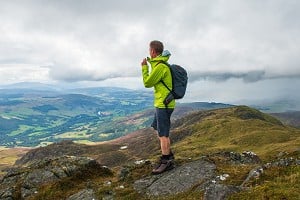
Stéphane Pennequin has meticulously curated a museum of almost every type of nut, hex, wedge, plug and camming device in the world in his own home. He probably has enough kit to equip the whole of Stanage - maybe even El Capitan - but despite his dedication to design and detail, he can't quite put a number to his collection. "Let's just say a big suitcase is too small, and a semi-trailer is a bit too big," he says, his imprecision belying his neatly catalogued and organised artefacts.

The Frenchman, 69, lives in Ajaccio on the island of Corsica and has been collecting seriously since the 1980s after life got in the way of his passion for climbing. Thankfully, he found a way to stay connected to the sport through its much-revered gear and associated paraphernalia, which provide tangible reminders of his days in the mountains while inspiring dreams of his unclimbed lines.
"I slowly became a collector of unusual objects instead of a practitioner of the activity they were designed for..."
He shares some of his collection on Instagram and writings about it on the Nuts Museum webpage hosted by the Lakeland climbing shop Needle Sports, where he also lists appeals for objects that he still seeks (medium and large Acorns, and a MOAC No. 4, to be precise, amongst other items).
We sent Stéphane some questions about his collection.
What kind of nuts and cams can we expect from Artificial Intelligence?
Interview translated from French.
When and how did you discover climbing?
I have no ancestors or "American uncle" to explain my attraction to climbing. I was born in Normandy, and very quickly my family opted to buy me a bike rather than sign me up for the mountaineering course in Chamonix that I'd always dreamed of.
At the beginning of the 1970s, climbing wasn't taught in schools, so the real revelation for me was the book Glace, Neige et Roc by Gaston Rébuffat, which was on display in my local newsagents' in October 1970! I was 15 at the time... The superb photos showing the equipment used by mountaineers took my breath away! These tools alone reminded me of mountaineering. To me, owning a carabiner at that time would have been enough to make me a mountaineer... I remember this sports shop in Caen where, on the stone walls of a staircase, pitons were planted. Climbing up to the first floor and getting up close and personal with these captivating objects sparked the earliest emotions in my climbing career.
My first climbs were, secretly, up the big trees in the immense forest of the Lycée Agricole du Robillard, where I spent a short period during my studies. A friend and I used to tackle the giants, organising little 'expeditions'. Some of the big thorny trees, with their first branches too high or too fragile, would force us to attack a neighbouring deciduous tree, then cross over, passing strange overhangs depending on whether the tree was more or less tortuous. Once we reached the coveted summit, we were as happy as a mountaineer achieving a first. It was wonderful...
I started 'proper' climbing in Corsica in the early 1980s, some time after the advent of the Friend.
Why did you become fascinated by nuts and cams? What's so special about them for you?
Behind these 'intelligent' objects with their many shapes and spectacular development lies the philosophy of Clean Climbing, which I immediately embraced. I don't know why, but the idea of collecting carabiners or pitons reminds me of Charlie Chaplin's film Les Temps Modernes, or Gainsbourg's song Le Poinçonneur des Lilas, or a world conducive to schizophrenia...
The clatter of equipment carried by climbers has always evoked a certain emotion in me. The credits of "Montagne" (a programme on the French TV channel FR3 many years ago) suggested a human presence on the rock face through the noise of the equipment used by the climbing team.
Why did you decide to collect them?
I don't think anyone decides to collect anything... First of all, passion was the real driving force behind my quest; climbing equipment has inspired me since I was a teenager. Nuts enabled me to combine climbing with my interest in ecology. In 1987, I set myself up as a freelance photographer in Ajaccio, and collecting slowly took over from my adventures on the island's rock faces.
In 1991, when my son Thomas was born, I realised that climbing in adventurous areas could 'deprive' my son of his dad. Once again, the equipment, their history and the people behind their creation came to my rescue, allowing me to satisfy my hunger for the mountains.
Then came the advent of digital technology, and the damage it did to my photography business. My research then became a real outlet, turning a small businessman in difficulty into a 'class swot' in his private sphere. All this to say that I slowly became a collector of unusual objects instead of a practitioner of the activity they were designed for...
To sometimes defend and apologise to my family for the space (literally and figuratively...) that collecting has taken in my life, I've written these few lines:
"Collecting is a frantic, methodical quest for objects that take us back to a bygone era, in search of witnesses that have disappeared. Sometimes these objects take on an unreasonable importance in our lives when we realise that time is running out and that they alone offer a reassuring promise of eternity."
Fortunately (?), the retirement pension of a shopkeeper and my family commitments have had a drastic, curative effect on my addiction. There remains, however, the generosity of the manufacturers, for whom the Nuts Museum illustrates with a certain elegance François de la Rochefoucauld's saying: "He who lives without madness is not as wise as he thinks."
What was your very first nut?
My very first passive protection, bought in the 1980s, were Bicoins and Chocks from Simond, Chamonix variants of the Stoppers and Hexentrics from the American company Chouinard Equipment. In manufacturing this complete range, the brand was probably the only one to offer French climbers the joy of trying Clean Climbing without having to move to the UK or the US.
I remember my first Friend very well, a n°2, with a rigid stem of course, bought in Corte in the heart of Corsica. With such an item on my harness, there was no doubt about my status as a climber: it definitely demanded respect... Another key memory is the purchase of a Three Cam Unit from Wired Bliss (distributed at the time by Salewa in Europe), an American mechanical rope clamp with a flexible stem. The salesman put the four sizes on the counter: it was really heartbreaking for me to have to leave three orphans in the shop...
How many of them have you used yourself?
I've never used the Nuts Museum equipment. When rare or antique objects are entrusted to me, I just restore them a little or repair them if they're damaged, photograph them and store them carefully. I don't feel like the owner, just the curator of the items that are given to me...
What is the most valuable item in your collection and your favourite?
My most prized pieces (it's impossible for me to sum up my answer in a single item): a small Acorn, the rare very first commercially available nut, made by John Brailsford in 1961; the Cam Nuts prototypes sent by Greg Lowe; an original Friend prototype made and donated by Ray Jardine; the Plugs, wooden nuts made by legendary climber David Rearick in 1973; Wedges, remanufactured in Australia for me by Roland Pauligk (RP); the Samson, a very rare spring-loaded camming device made from fibreglass/carbon/nylon composite materials, and of course prototypes of Metolius Supercams, Trango MaxCams, Omega Pacific Link Cams and Totem MP Totem Cams...
What do you think of the evolution of nuts and cams over time - could they get even better?
I've always been fascinated by the many developments. Probably no other piece of climbing equipment has seen so many dazzling innovations. As well as being reliable, mechanical camming devices are devilishly good-looking. A big, colourful Friend inevitably arouses the curiosity of the neophyte, and the conclusion is often the same: "I don't know what it's for, but it's beautiful!"
I regularly consult patent registration databases and I'm always amazed at the amount of discovery and work that goes into it. It often all starts with a vague idea somewhere on a rock face, or even in the bath, before reaching the drawing board. The most innovative, the most revolutionary ideas have to make it past the sales people before they can be put into the hands of climbers. What kind of nuts and cams can we expect from Artificial Intelligence?
Early trad gear involved a lot of British invention and innovation, but you have items from all over the world. What other countries and models are represented in your collection?
As far as countries are concerned: Australia, Austria, Canada, Czech Republic, France, Germany, Italy, New Zealand, Russia, Korea, Spain, Sweden, Switzerland, Thailand, Ukraine, and the USA of course... Regarding models, I worry that an exhaustive list would bore your readers...
Are there any items you're still looking to add to your collection?
In truth, not many, as my aim is not, fortunately, to reconstitute complete sets of all the nuts on the market. I do know, however, that the items still missing from the Nuts Museum will take time and energy, but chance, which is often kind to me, will have a part to play in this 'quest for the absolute.'
For passive protection, nothing would please me more than a complete set of Acorns, i.e. the small, medium and large sizes of the First Purpose Designed Nut. Invented and manufactured by John Brailsford in 1961, the medium and large sizes are still hard to find, even in photos. To me, they are the foundation of the history of the nut. I'm amazed that, despite expending an incredible amount of energy, I've never been able to bring these treasures into the fold...
When it comes to mechanical camming devices, I've got no problem making up my mind either: the Crack Jumar made by Greg Lowe in 1967 opened the door to the cohort of mechanical cams! My perseverance in acquiring one was fuelled by Greg's persistence in keeping it: it was a real experiment in nuclear physics.
But we all know that we can never reach the Grail, so for me the ultimate quest would be to find the very first stopper, the Scottie. Invented by Welsh guide George Dwyer in 1946, fifteen years before the use of nuts, this unique piece would mark the ultimate stage in this journey through time. I'm already delighted that its owner, Ken Latham, has kindly allowed me to photograph it 'in action' in the wild.
What would your ideal trad rack include (you can mix and match sizes and brands!)?
Apart from the Nuts Museum in its entirety... I'm sorry, I can't think of anything relevant to answer that question.
Have you ever tried making your own gear?
Apart from drilling holes in my biggest Simond Chocks to lighten them, that's as far as I've got with mechanical engineering. However, one fantasy keeps nagging at the back of my mind... the creation of a utopian "nut" that would make it possible to protect the most compact slabs, all nuts, without the need for a drill... this "Slabkiss" has yet to be invented...
Have you ever climbed in the UK?
No, apart from Corsica and two trips to the Verdon, I've never worn-out my climbing shoes anywhere else. But on two all-too-short trips to England and Wales, in May 1996 and October 1998, I was lucky enough to meet people like the legendary Joe Brown; Tony Howard, Paul Seddon and Alan Waterhouse, the founders of Troll; Denny Moorhouse and Shirley Smith, the creators of the legendary Clog company; Mark Vallance, the inventor of Rocks, but also the man who mortgaged his house to found Wild Country; Fred Hall, the soul of DMM; Hugh Banner, who your readers will recognise by his initials HB (Climbing Equipment), another leading figure in British climbing; Ken Wilson, editor of the legendary Mountain magazine... All these people opened their doors to me with great kindness and curiosity. Their generosity and interest in my work were the best reward for my perseverance. Visits to the Clog, DMM, HB, Troll and Wild Country workshops were exciting moments for me, and I was honoured by the trust they placed in me.
You planned to write a book on climbing protection. Has this project come to fruition?
Putting together all the information, anecdotes and photos I've gathered on protection over the last thirty years in a single volume would have been a logical outcome to my research. This book would have enabled me to bring together all those who have taken an interest in my work, helped me or placed their trust in me; everyone witnessing in such a work their contribution to the edifice. My articles Nuts' Story: 2001 a Nut Odyssey published in the British magazine High Mountain Sports in June 2001 and Nuts' Story: Clockwork Friend published in October 2003 were the foundations of the book.
And then, apart from the time commitment involved in such a project, I began to doubt whether a publisher would be interested in a book that I would like to be 'exhaustive', and therefore probably rather boring. In April 2022, my son Thomas told me about Instagram, a social network that gives pride of place to photography. I can publish, tell stories, correct and keep up to date as I please, without any commitment or pressure, which ultimately suits my character better...
- SKILLS: Top Tips for Learning to Sport Climb Outdoors 22 Apr
- INTERVIEW: Albert Ok - The Speed Climbing Coach with a Global Athlete Team 17 Apr
- SKILLS: Top 10 Tips for Making the Move from Indoor to Outdoor Bouldering 24 Jan
- ARTICLE: International Mountain Day 2023 - Mountains & Climate Science at COP28 11 Dec, 2023
- ARTICLE: Did Downclimbing Apes help Evolve our Ultra-Mobile Human Arms? 5 Dec, 2023
- ARTICLE: Dàna - Scotland's Wild Places: Scottish Climbing on the BBC 10 Nov, 2023
- INTERVIEW: Loki's Mischief: Leo Houlding on his Return to Mount Asgard 23 Oct, 2023
- INTERVIEW: BMC CEO Paul Davies on GB Climbing 24 Aug, 2023
- ARTICLE: Paris 2024 Olympic Games: Sport Climbing Qualification and Scoring Explainer 26 Jul, 2023
- INTERVIEW: Malcolm Bass on Life after Stroke 8 Jun, 2023















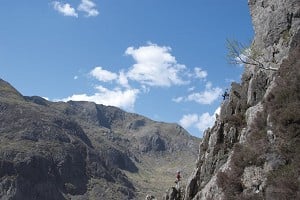

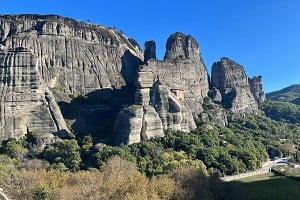
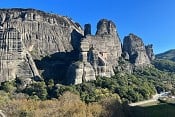




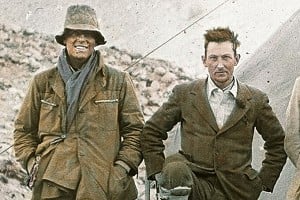
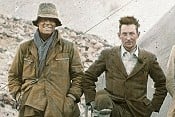


Comments
Really interesting article, and what a nice guy he seems to be.
Could you ask him if he'd consider selling that silent partner? :P
Amazing collection and knowledge! A real insight into devotion to a quirky cause.
Bonjour treesrockice, I understand and share very well your interest for the legendary Silent Partner. I first heard about it in Mike Strassman's 1990 edited book, Climbing Big Walls. I then contacted the inventor Mark Blanchard, Mammoth Lakes, who sent me an early documentation. After its release on the market I dreamed of it for months before being able to acquire a sample. At that time I did not yet know that its production would be abandoned by Rock Exotica...
Wow. I've got loads of stuff I never use. I started with old wooden ice axes, leather winter boots - then those Koflacs - cupboards full of stuff. I shall no longer accept it being called "Tat", it is now my "Private Museum". Best bit of kit? Belaying on a wedged out of date frozen Mars bar on Central Buttress in Stob Corrie Nan Lochan, just to wind up our mate who was a guide. I might have ate the historic artifact though.
Brilliant article. Thanks.